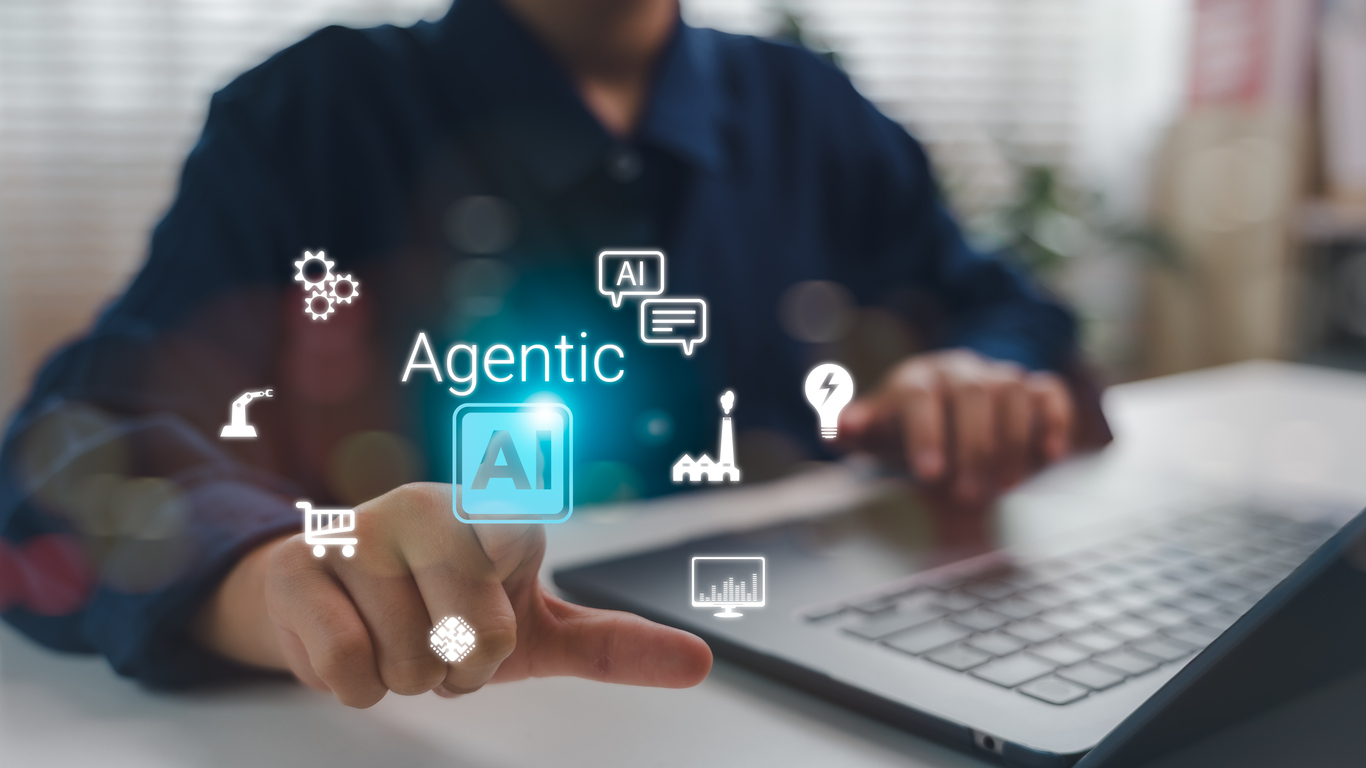Explore how Agentic AI drives continuous optimization in procurement through learning from outcomes and refining strategies
Introduction
Some of the many benefits of Agentic AI in the procurement/source-to-pay process derive from its ability to learn continuously as it executes tasks and then use the knowledge it acquires to optimize. Agentic AI can thus improve procurement performance through learning from outcomes and adapting strategies in real time. In this article we consider how agentic AI-driven procurement will change the function in the years ahead.
How agentic AI learns from outcomes to optimize procurement
Agentic AI will enhance future procurement strategies by learning from past decisions through continuous data collection, feedback loops, and performance evaluation across sourcing, contracting, supplier performance, and risk management.
Let’s take intelligent supplier re-evaluation based on performance and risk trends as an example. Suppose a manufacturing firm experiences repeated delays and quality issues from a Tier 2 supplier. Agentic AI monitors delivery timelines, defect rates, and geopolitical indicators. Over time, it detects a pattern: the supplier consistently underperforms during certain quarters, which could be as a result of taking on more orders than it has capacity to meet or other factors such as disruptions further along the supply chain.
Agentic AI learns from the tell-tale symptoms and correlates them with capacity indicators (e.g., production forecasts, industry reports, or even employee sentiment data). This allows it to downgrade the supplier’s risk ratings, shift volume to alternate suppliers, or renegotiate contract terms accordingly. In some cases, this could be done autonomously. In other cases, it might inform procurement and finance teams and recommend new contract clauses to mitigate exposure.
Agentic AI thus learns from outcome data and real-world signals to continuously refine supplier rankings, protecting margins and ensuring continuity.
Another example is dynamic sourcing optimization using historical cost-benefit data. Let’s say a company previously saved eight percent by sourcing a component from a remote supplier but incurred higher logistics and lead-time costs. The agentic system could analyze this historical trade-off using AI-powered cost modelling and market intelligence.
When a similar sourcing decision arises, the system doesn’t simply copy the old decision but applies updated transport costs, currency fluctuations, and ESG impact to project total value, not just price. It proposes a blended sourcing model or introduces a new vendor it has learned to trust from other sourcing events.
Thus, by analyzing outcomes from past sourcing strategies, agentic AI enables smarter, more nuanced decisions based on total value rather than lowest cost alone.
The role of closed-loop feedback in procurement performance
A term you will often hear in this context is “closed loop feedback.” What this means for procurement is a continuous, automated cycle where the system:
- Takes action (e.g., selects a supplier, negotiates a contract, issues a purchase order);
- Monitors the outcome (e.g., delivery time, cost vs. projection, supplier responsiveness, ESG compliance);
- Evaluates performance against expected results or KPIs;
- Learns from the outcome by updating its internal models or rules; and
- Refines future decisions automatically based on that learning.
This closed loop means the AI isn’t working in isolation or based on static rules. Instead, it continuously acts, observes, learns, and improves. Over time, this leads to increasingly strategic, context-aware, AI-driven procurement decisions without requiring manual review or human prompting at each step. Implemented correctly, this also supports governance, since each decision is traceable to a learning-based rationale.
Benefits of continuous procurement optimization with agentic AI
Procurement optimization with agentic AI brings multiple benefits, but they fall under three main headings: efficiency gains, cost reduction, and risk management and mitigation.
Efficiency gains: Constant learning will, in general, lead to improved decision-making speed and accuracy, although the way agentic AI does this will vary according to circumstances and the type of supplier. For strategic suppliers it may not execute decisions autonomously but will instead enhance human decision-making by providing comprehensive analysis and recommendations. For core suppliers, it will either take actions or alternatively propose actions that humans can approve with minimal effort. And for tail spend, it can operate autonomously, negotiating directly with suppliers and executing actions without human intervention.
Cost reduction: Optimizing procurement processes through closed-loop feedback can lower costs and increase procurement efficiency. The AI doesn’t just analyze and recommend but rather, it takes action. The result is a dramatic reduction in the cost and time required for procurement activities, allowing organizations to address opportunities for savings that were previously ignored due to resource constraints.
Risk management and mitigation: Whereas until now risk models have been based on static snapshots of the risk landscape, agentic AI is like a risk radar scanning the entire horizon. By continuously ingesting supplier risk data, cloud workloads, user behaviors, and threat intelligence, agentic AI builds a context-rich map of an organization’s supply chain. It autonomously correlates anomalies, ranks risks by potential business impact, and can trigger pre-approved mitigations, such as sourcing alternative suppliers, often before human analysts even notice the threat. This dynamic, consequence-driven prioritization slashes reaction times.
Overcoming challenges in continuous procurement optimization
While the benefits of continuous procurement optimization are clear, many challenges must be addressed before organizations can begin to capture these benefits. They include:
Fragmented data and systems: Disparate tools and siloed data across departments hinder the integrated insights needed for autonomous decision-making. High-quality, clean and consistent data is essential for training AI models.
Low digital maturity: Many organizations still rely on manual processes or semi-automated systems for procurement, obstructing or limiting the effectiveness of AI-driven orchestration.
Lack of trust and governance frameworks: Agentic AI raises concerns about accountability, especially in high-stakes supplier decisions, requiring strong oversight mechanisms. Who is to blame when an AI agent makes a bad or harmful choice? These problems need to be fixed through better design, governance, and regulation to make sure that agentic AI is used safely and ethically. Organizations will need to find the right balance between AI automation and human intervention to ensure compliance and accountability.
Supplier ecosystem complexity: Limited visibility beyond Tier 1–2 suppliers makes it difficult for AI to assess risks and opportunities holistically, which will set limits on optimization.
Skills gap: Procurement professionals who are “old school” may lack the capabilities or willingness to interpret or collaborate with AI agents effectively, reducing adoption and ROI. Cultural inertia and fear of automation can lead to internal pushback, particularly if AI is perceived as threatening jobs or autonomy.
Cybersecurity and compliance risks: Agentic AI systems handling sensitive negotiations or contracts must comply with regulatory, ESG, and cybersecurity standards. This may impede optimization, especially in heavily regulated industries such as pharmaceuticals.
Future trends in continuous procurement optimization
So, how long will it be before we see continuous optimization happening in practice within the procurement function? The groundwork for closed-loop orchestration is already being laid in 2025, but widespread, effective implementation will likely roll out over the next 2–3 years, especially for manufacturers that have already invested in digital procurement platforms and AI-driven insights. Elsewhere the time horizon is somewhat greater and still unclear.
Continuous feedback and self-optimizing orchestration depend on mature data integration, system consolidation, and advanced analytics, which are still in various stages of rollout across industry.
A major trend over the coming years will be self-improving agentic AI. In other words, reinforcement learning goes further than improving individual decisions. When AI agents use reinforcement learning, they try, fail, learn, and get better. As the reinforcement learning method improves, the AI agents will also enhance their own decision-making but more crucially, their ability to handle new situations.
Another trend will be the ability to understand human intent. Systems that work autonomously need to be able to figure out what we want, even if we don’t say it explicitly. More broadly, the ability to deal with human intent will let allow agentic AI to make choices faster and more accurately, accelerating the optimization process.
There are concerns. Optimization requires agentic AI to be adaptable, which means making decisions with limited transparency. This makes troubleshooting hard and can make users less likely to trust the system. On the other hand, optimization will overcome biases that may reflect or amplify biases from the training data, which can lead to unfair results such as sub-optimal supplier selections. There is a balance to be struck here.
Over time, however, multi-agent systems will work together across different business functions. These systems will be crucial in places where collaborative effort is important.
In the long term, this is great news for procurement as it will act as a central node for organizational intelligence, bringing together finance, operations, and supply data to drive enterprise-wide decisions on cost, risk, and sustainability.
Key takeaways: leveraging agentic AI for continuous procurement optimization
According to Gartner, by 2028, 33% of enterprise software applications will include agentic AI, up from less than 1% in 2024, enabling 15% of day-to-day work decisions to be made autonomously (up from 0%). Because agentic AI is a) able to absorb and learn from masses of data that humans are incapable of absorbing, and b) able to learn from its own decisions, we will soon be seeing continuous procurement optimization for a large chunk of our work. Longer term, agentic AI systems will become more adaptive, better able to interpret and anticipate human needs.
There are many technical, organizational and ethical obstacles to be overcome, but this will happen. In future, continuous procurement optimization will raise the profile and operational significance of procurement as a hub for enterprise decision-making.
Meet JAI: The Future of Procurement Intelligence Is Here
JAI is JAGGAER’s agentic AI platform that transforms your Source-to-Pay journey.




